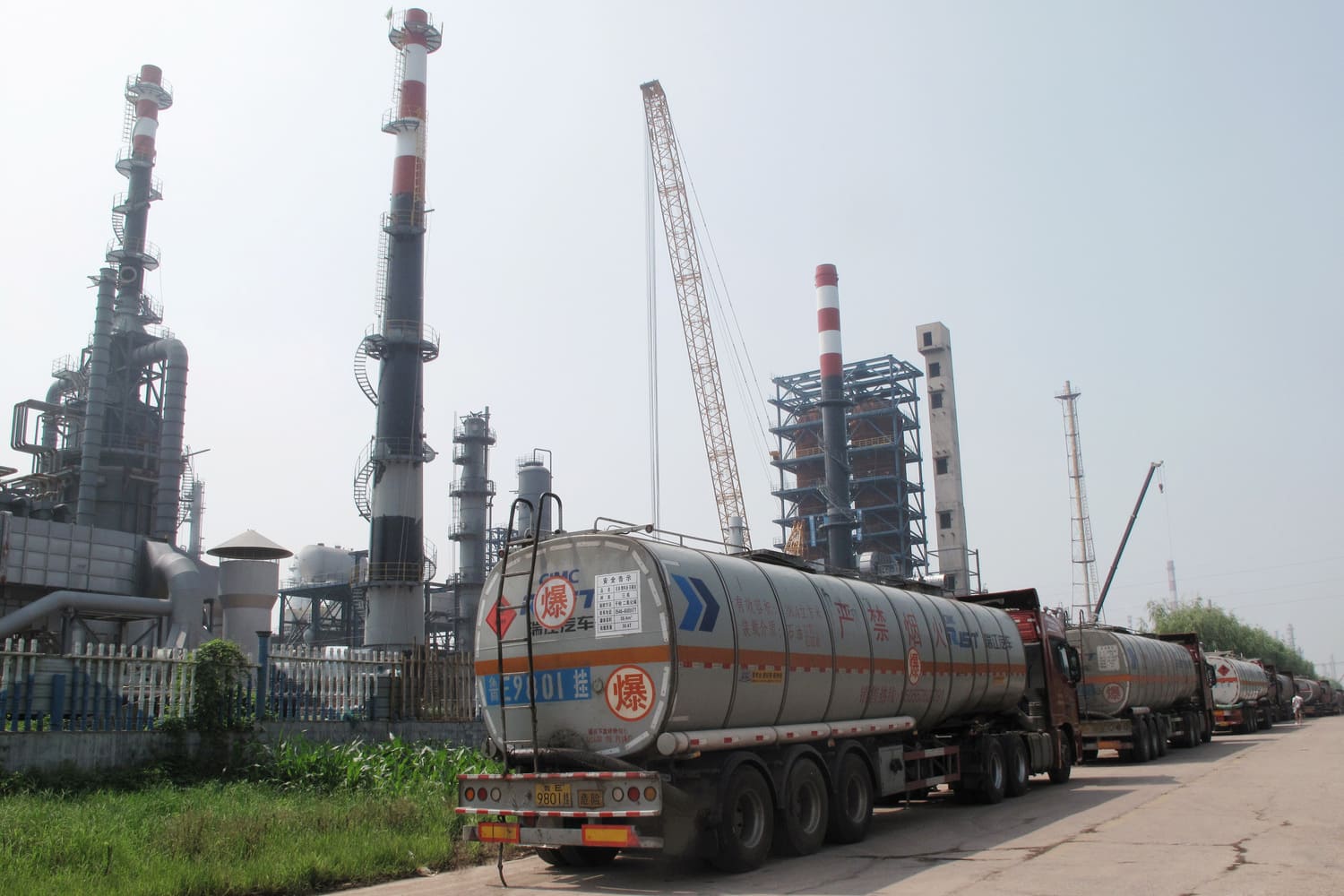Chinese fuel exports in the second batch of 2023 are expected to decline by up to 12 million tons (85.2 million barrels), as domestic demand continues to improve.
A survey of 4 government refining sources and 3 consulting firms showed that the second batch of export quotas for gasoline, red diesel and jet fuel could range between 8 million tons (56.8 million barrels) and 12 million tons (85.2 million barrels), according to information seen by the specialized energy platform.
Reuters data showed that this figure will be lower than the first batch of 18.99 million tons (134.83 million barrels), although it has risen almost 3 times over the year, at the end of the range of estimates.
(tonne = 7.1 barrels)
Chinese fuel exports
“Refiners will be awarded about 10 million tons (71 million barrels) of new export quotas in the coming weeks, as they can use more than 80% of the 2023 quotas by the end of April,” said Energy Aspects analyst Sun Jian’an.
Sun noted that with the economy mostly improving through domestic consumption activities this year (2023), the Chinese government will be less forced to rely on exports of oil products to boost economic growth.
China’s fuel exports of the three major products are likely to remain high in April at about 3 million tons, according to a Reuters tally of estimates from consulting firms and trade sources.
Reuters calculations showed that in the first quarter of 2023, total exports of these fuels amounted to 12.88 million tons (91.45 million barrels), or about 68% of the first batch of quotas.
Increasing domestic demand for fuel
Quotas are usually only issued to state refiners Sinopec, PetroChina, Sinochem, Sinooc, China National Aviation Fuel Corporation and privately owned Zhejiang.
It is not clear when the Ministry of Commerce will notify the companies of their sizes in the second batch of quotas, although the second batch of sizes was issued in June of last year (2022).
Chinese refineries are expected to focus more on domestic sales, as their profit margins have improved, while diesel prices have fallen in Asian markets, according to Reuters.
A source at a state-run refinery said domestic diesel prices were 270 yuan ($39.19) per ton more than export prices, discouraging exports.
Traders added that refineries are building inventories ahead of the refinery maintenance peak later in the second quarter, in preparation for an improvement in third-quarter demand over the summer.
The following graph – prepared by the specialized energy platform – shows oil consumption in China from 201 to 2022:
High standard of refinery production
For their part, Chinese refineries processed more crude oil than ever before in March; However, Beijing continues to build up stocks.
Refinery production in China reached an all-time high of 63.9 million tons in March, or about 15.11 million bpd, up from 14.36 million bpd in the first two months of the year, according to Reuters.
However, the amount of crude available to refiners from imports and domestic production also rose in March, to 16.67 million bpd, according to calculations based on official data.
Crude oil imports in March amounted to 12.37 million barrels per day, while domestic production reached 4.3 million barrels per day.
Subtracting refinery output would leave 1.56 million bpd likely flowing into commercial or strategic stocks.
A jump in Chinese fuel exports
In a related context, Chinese fuel exports of gasoline, red diesel and jet fuel jumped to 9.56 million metric tons (1.27 million barrels per day) in the first two months of 2023.
It is compared to 3.53 million metric tons (25.23 million barrels) in the same period in 2022, a growth rate of 171.2%, according to what was announced by the General Administration of Customs.
The jump in Chinese fuel exports is due to the government’s encouragement to exporters, by increasing the quantities allowed to be exported by 68.2%, to reach 21.86 million metric tons (156.24 million barrels) in early January, compared to the same period in 2022.
Despite the significant increase in Chinese fuel exports on an annual basis in the first two months of 2023, those exports fell from their highest level in 32 months.
Chinese fuel exports fell by 21.5% in January, to 1.28 million barrels per day, compared to 1.63 million barrels per day in December 2022.
related topics..
Also read..

Leave a Reply